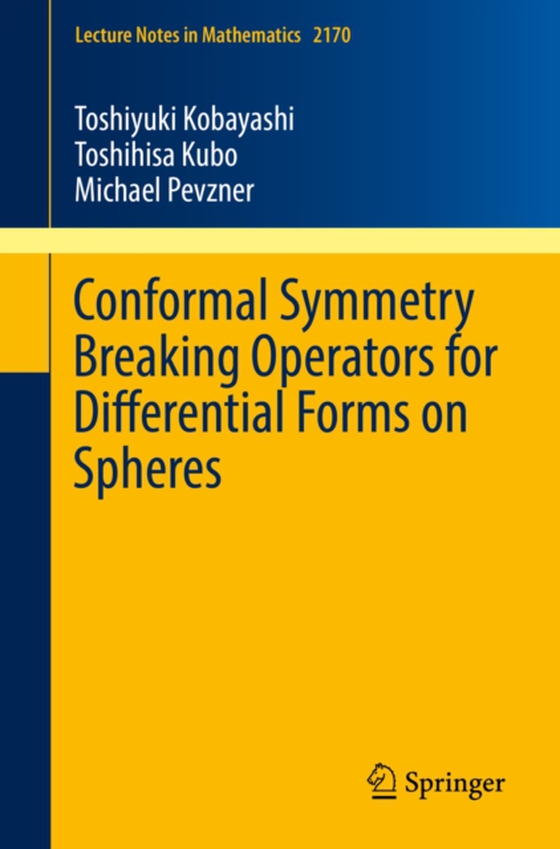
Conformal Symmetry Breaking Operators for Differential Forms on Spheres e-bog
260,50 DKK
(inkl. moms 325,62 DKK)
This work is the first systematic study of all possible conformally covariant differential operators transforming differential forms on a Riemannian manifold X into those on a submanifold Y with focus on the model space (X, Y) = (Sn, Sn-1).The authors give a complete classification of all such conformally covariant differential operators, and find their explicit formulae in the f...
E-bog
260,50 DKK
Forlag
Springer
Udgivet
11 oktober 2016
Genrer
PBG
Sprog
English
Format
pdf
Beskyttelse
LCP
ISBN
9789811026577
This work is the first systematic study of all possible conformally covariant differential operators transforming differential forms on a Riemannian manifold X into those on a submanifold Y with focus on the model space (X, Y) = (Sn, Sn-1).The authors give a complete classification of all such conformally covariant differential operators, and find their explicit formulae in the flat coordinates in terms of basic operators in differential geometry and classical hypergeometric polynomials. Resulting families of operators are natural generalizations of the Rankin-Cohen brackets for modular forms and Juhl's operators from conformal holography. The matrix-valued factorization identities among all possible combinations of conformally covariant differential operators are also established.The main machinery of the proof relies on the "e;F-method"e; recently introduced and developed by the authors. It is a general method to construct intertwining operators between Cinfinity-induced representations or to find singular vectors of Verma modules in the context of branching rules, as solutions to differential equations on the Fourier transform side. The book gives a new extension of the F-method to the matrix-valued case in the general setting, which could be applied to other problems as well.This book offers a self-contained introduction to the analysis of symmetry breaking operators for infinite-dimensional representations of reductive Lie groups. This feature will be helpful for active scientists and accessible to graduate students and young researchers in differential geometry, representation theory, and theoretical physics.
 Dansk
Dansk

